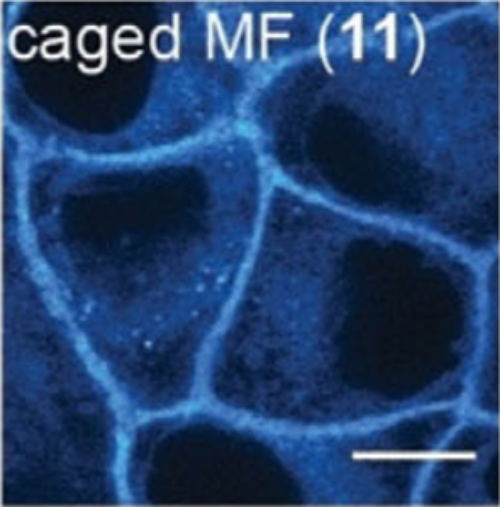A Coumarin Triflate Reagent Enables One-Step Synthesis of Photo-Caged Lipid Metabolites for Studying Cell Signaling.
Photorelease of caged compounds is among the most powerful experimental approaches for studying cellular functions on fast timescales. However, its full potential has yet to be exploited, as the number of caged small molecules available for cell biological studies has been limited by synthetic challenges. Addressing this problem, a straightforward, one-step procedure for efficiently synthesizing caged compounds was developed. An in situ generated benzylic coumarin triflate reagent was used to specifically functionalize carboxylate and phosphate moieties in the presence of free hydroxy groups, generating various caged lipid metabolites, including a number of GPCR ligands. By combining the photo-caged ligands with the respective receptors, an easily implementable experimental platform for the optical control and analysis of GPCR-mediated signal transduction in living cells was developed. Ultimately, the described synthetic strategy allows rapid generation of photo-caged small molecules and thus greatly facilitates the analysis of their biological roles in live cell microscopy assays.

- Chemistry. 2019 Dec 5;25(68):15483-15487
- 2019
- Applied Chemistry
- 31461184
- PubMed
Enabled by:
